At the chiropop’s office the other day, I ran across this months issue of Real Simple, and found — well, a lot of aggravation, for one thing, since ‘real’ in the title should be adverbial, as in Really Simple, but aside from that, in the November issue I also found a recipe for what’s called Indian Pudding.
Hmm. Indian pudding. It seems like I have a faraway, foggy memory of something like this pudding from a 4th grade study unit on Plymouth Rock, Puritans, Pilgrims and First Nations peoples… but that can’t be right, since I very much doubt that First Nations people went around  popping things in the oven and topping them with whipped cream. A little research informs me that in reality, this dish is called “Indian” pudding because the early settlers referred to the main ingredient as “Indian meal” – the meal used by the First Nation peoples. Generally, John and Mary Puritan weren’t all that creative, so any recipe using Indian meal as the main ingredient was called Indian… . Over time, the plant became known as corn, and the meal made from it as corn meal.
popping things in the oven and topping them with whipped cream. A little research informs me that in reality, this dish is called “Indian” pudding because the early settlers referred to the main ingredient as “Indian meal” – the meal used by the First Nation peoples. Generally, John and Mary Puritan weren’t all that creative, so any recipe using Indian meal as the main ingredient was called Indian… . Over time, the plant became known as corn, and the meal made from it as corn meal.
History lesson aside, the Americanized version of this British steamed ‘hasty’ pudding thing (sans myself and classmates grinding the cornmeal ourselves on indented rocks ) sounds fabulous. These are the ingredients I’m dragging on our Thanksgiving Odyssey:
Indian Meal Pudding
- 4 cups whole milk (Oy! 2% or skim makes it too thin, I suppose.)
- 2/3 cup finely ground cornmeal
- 1/2 cup molasses
- 4 tablespoons unsalted butter, plus more for the dish
- 1/4 cup light or dark brown sugar
- 1/2 teaspoon kosher salt
- 1 teaspoon ground ginger
- 1 teaspoon ground cinnamon
- 1/4 teaspoon ground nutmeg, plus more for garnishing
- 1 teaspoon vanilla extract (I’m going to go for vanilla beans, I think.)
- 2 cups (1 pint) heavy cream, whipped to firm peaks (Whoa! Not a lowfat dish.)
Heat oven to 350° F.
In a large saucepan, over medium-high heat, bring 3 cups of the milk to a boil.
In a small bowl, whisk together the remaining milk and the cornmeal. Whisking constantly, slowly add the mixture to the boiling milk. Reduce heat and simmer gently, stirring frequently, for 15 minutes. Remove from heat. Stir in the molasses, butter, brown sugar, salt, ginger, cinnamon, nutmeg, and vanilla. Transfer to a buttered 1 1/2-quart casserole dish. Set the casserole in a roasting pan, pull the oven rack out halfway, and place the pan on it. Carefully add enough hot water to the pan to reach halfway up the casserole. Cover both pans with a single large sheet of foil. Bake for 1  hour.
hour.
Remove foil. Bake until the pudding is almost set but still wobbly, 1 1/2 hours more. Transfer casserole to a wire rack for at least 30 minutes. Spoon onto plates. Serve with the whipped cream and sprinkle with nutmeg.
Makes 8 to 12 servings
This sounds very simple… a slow-cooked cornmeal dish that probably made its way from New England to the South in some version or other. The Pilgrims, I’m afraid, were everywhere. Dare I say this dish sounds like sweetened grits? I can’t wait to try it out, and I’ll tell you how it goes after I figure out how to substitute all of the dairy ingredients so that it’s something I want to eat.
It’s been a funny month. I’ve got so much going on, what with NaNo Month, the Cybils, and the crazy Thanksgiving thing this weekend, not to mention substitute teaching and sibling-sitting while my sister is in recovery — I’m busy! Yet all I want to do is cook and putter and completely ignore actual WORK. It feels like my psyche is slowly but surely unraveling, and the downtime that cooking brings is essential to my sanity. I don’t wanna work… but just banging on the drum all day is overrated. Bring on the baking!


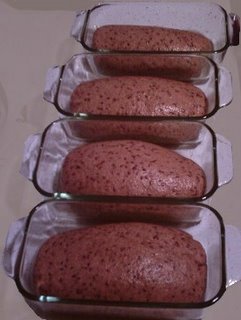
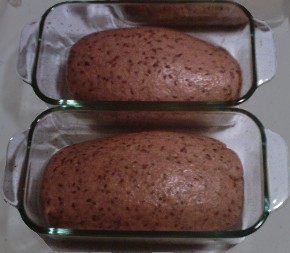
 actually funny. But, never fear, we who Wish We Were Baking will always find a way… and a means… and a little bit of dough…
actually funny. But, never fear, we who Wish We Were Baking will always find a way… and a means… and a little bit of dough…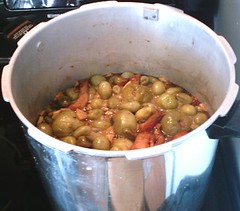
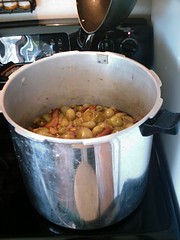
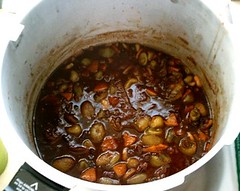
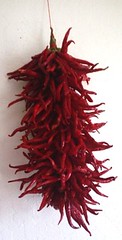



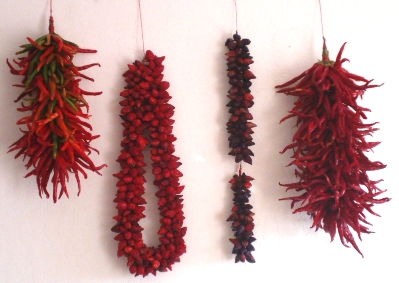
 roast, just like pumpkin seeds. Yum. I just tossed my ingredients into a lightly spritzed casserole dish, in layers, as if I was doing lasagne. I started with the breadcrumbs on bottom, and build up. If you don’t have herbed bread in crumbs, use it in a solid layer of slices. And if your bread isn’t herbed, bodge in some chopped rosemary and a sage and garlic powder, will you? I also added an optional 1 tbsp. of smoked
roast, just like pumpkin seeds. Yum. I just tossed my ingredients into a lightly spritzed casserole dish, in layers, as if I was doing lasagne. I started with the breadcrumbs on bottom, and build up. If you don’t have herbed bread in crumbs, use it in a solid layer of slices. And if your bread isn’t herbed, bodge in some chopped rosemary and a sage and garlic powder, will you? I also added an optional 1 tbsp. of smoked